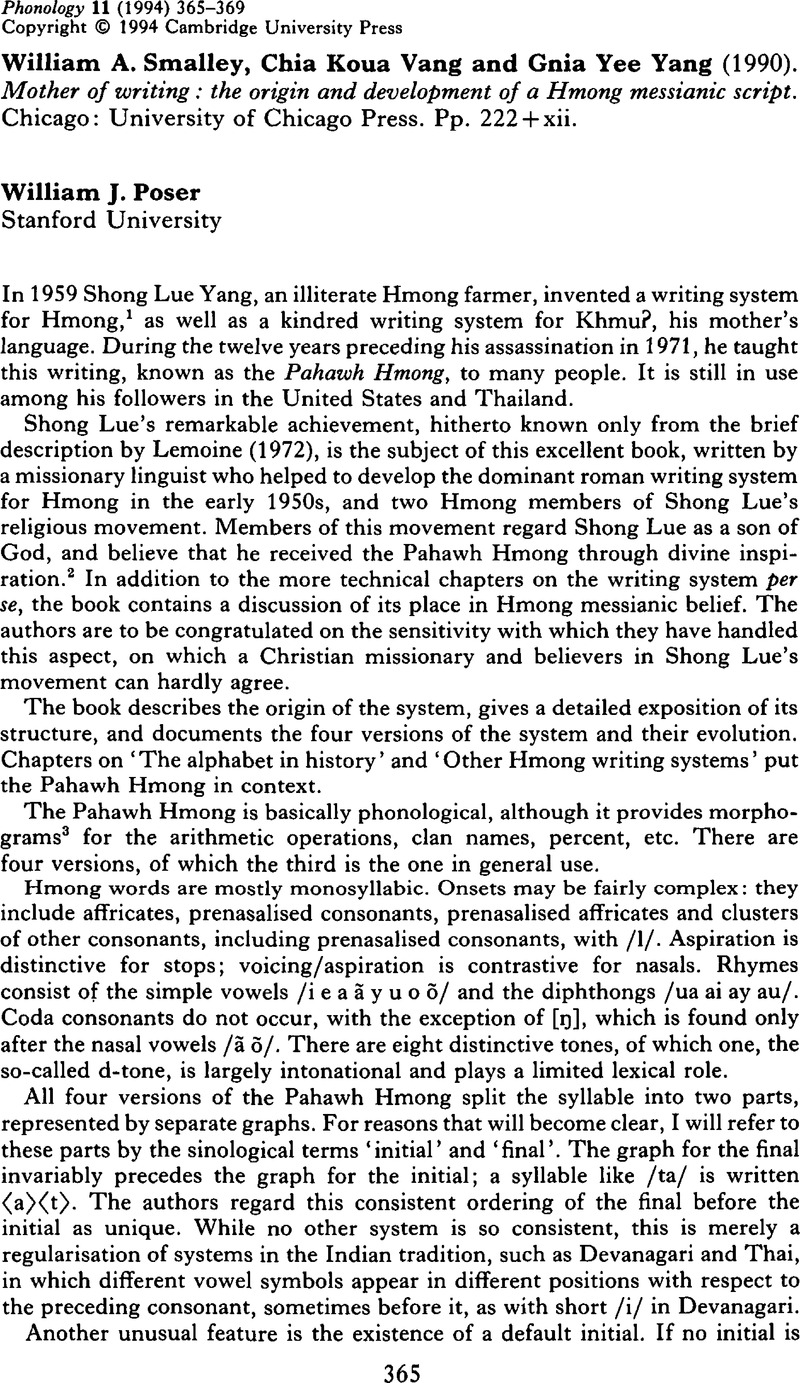Crossref Citations
This article has been cited by the following publications. This list is generated based on data provided by Crossref.
Sproat, Richard
1998.
Review of Daniels & Bright (1996): The world's writing systems.
Written Language & Literacy,
Vol. 1,
Issue. 1,
p.
129.





